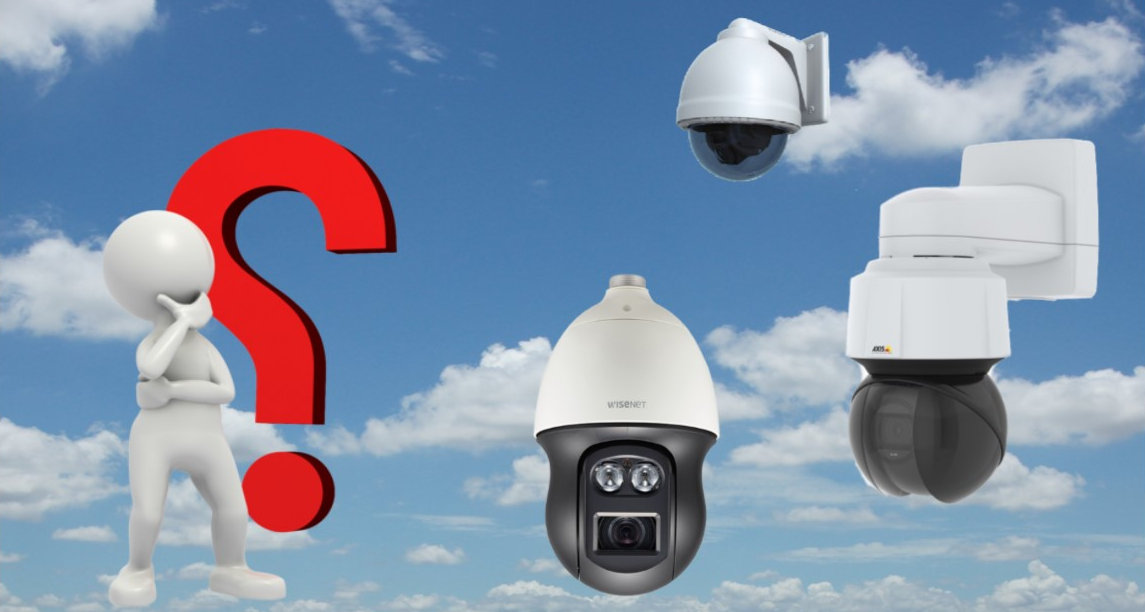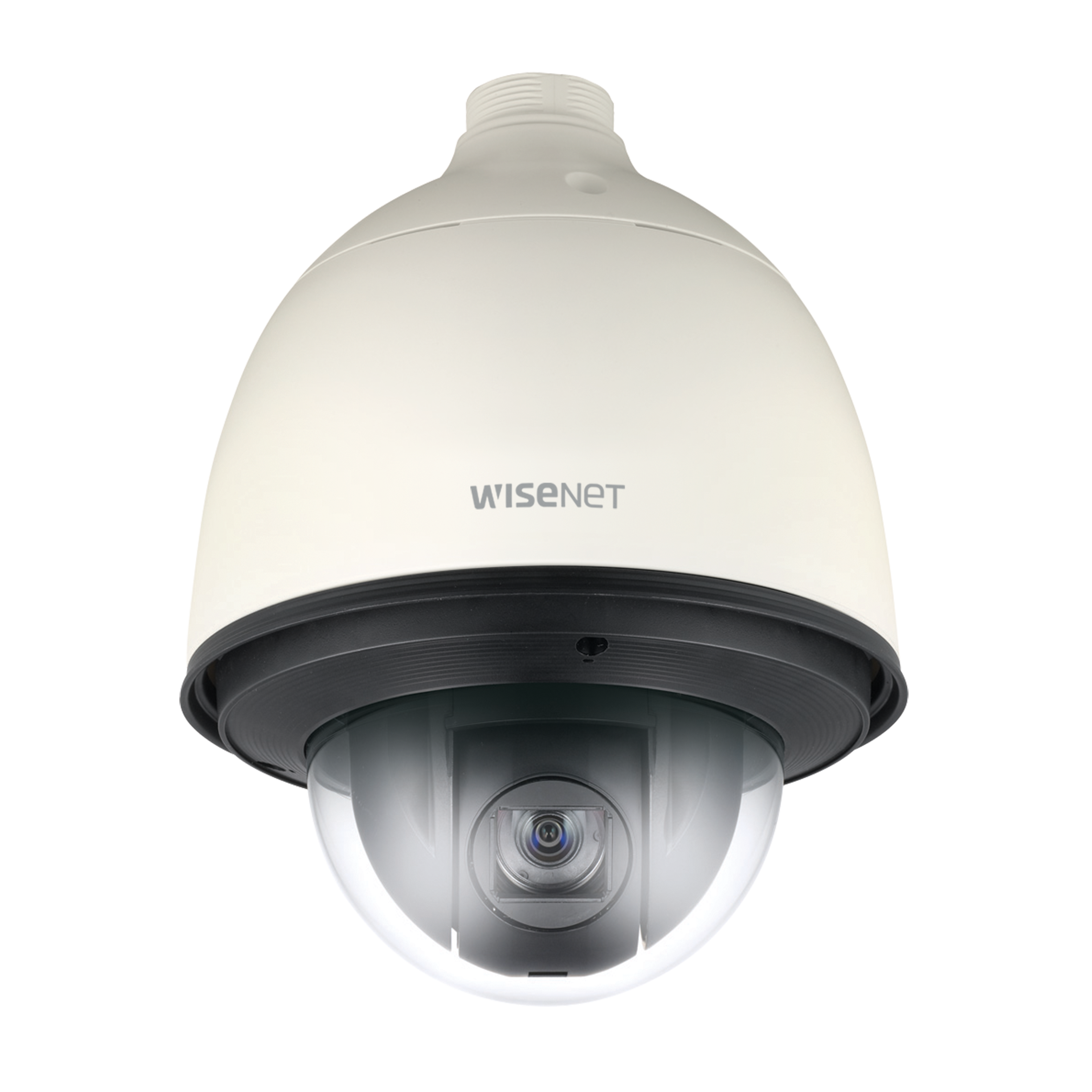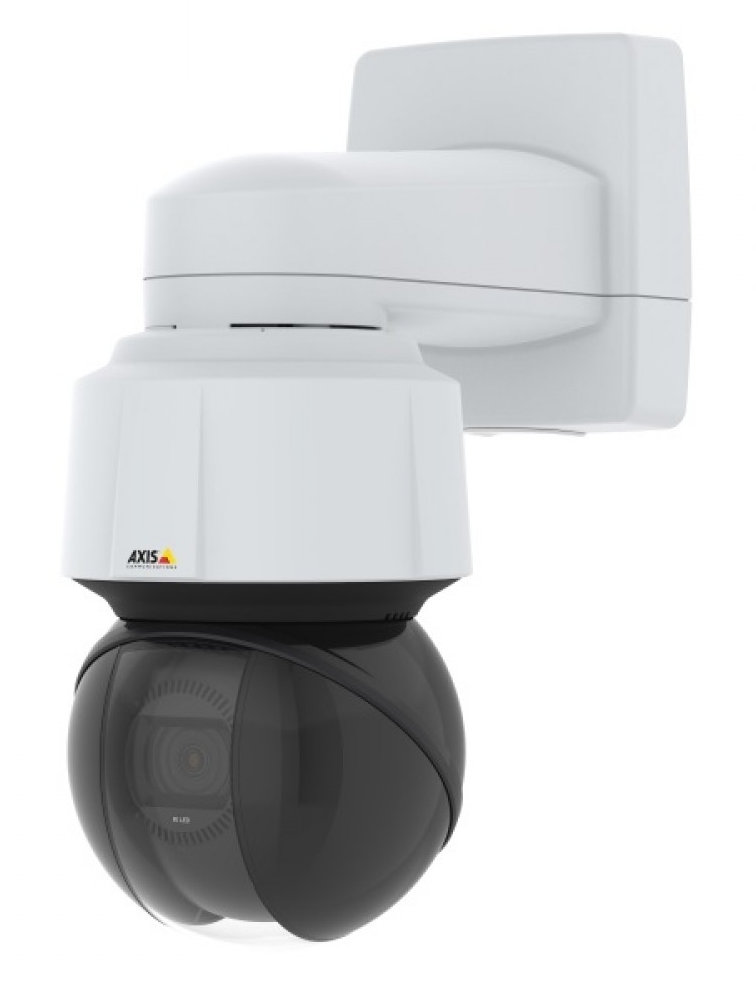What is the Best PTZ Camera

Pan tilt zoom (PTZ) IP cameras connect to the network and provide the ability to view extensive areas. A PTZ camera can move back and forth (pan), up and down (tilt), and zoom in and out. When it is combined with intelligent video management software (VMS), it provides an effective surveillance system.
This article compares several PTZ cameras. We considered several characteristics, such as the zoom lens, camera resolution, low light sensitivity, pan, tilt ability, and nighttime viewing capability. This comparison should help you select the right PTZ camera. Remember that the most critical question is to determine if the PTZ camera meets your objectives.
What Are Your Surveillance Objectives
Before we compare different PTZ cameras, we must determine what we need to see. We must set our objectives for the camera. For example, what detail (resolution) do we need to see? There are several different goals. We could use the military objectives defined by DRI (Detection, Recognition, and Identification, but this can get confusing. Take a look at our article Detection, Recognition, Identification: The New Criteria for more details.
In the security and surveillance world, we may want to view people entering the building, or the vehicles in the parking lot. In some applications, we may be interested in reading a license plate or identifying a person’s face.
PTZ Camera Zoom Lens
The lens zoom is one of the more important specifications for PTZ cameras. The lens is measured in focal length (mm or angle). The capability of the zoom is defined by the ratio of the smallest focal length (narrow) to largest (wide) mm settings. For example, there are 12X zoom lenses that can be adjusted between 5.2 mm to 62.4 mm. The maximum zoom (or smallest angle) defines how far away we can see an object, while the minimum zoom (wide angle) determines how wide the field of view will be.
I have been asked many times, how far away can I see with that camera? Of course, that’s not the best question to ask. I can see the moon, which is over 238,000 miles away (384,000 km), but the critical question is what detail do I want to see? The maximum focal length of the lens determines the distance we can see. With a large enough lens (around 500 mm), we can see the craters on the moon.
PTZ Camera Resolution Specification
The resolution is another essential specification for PTZ cameras. The zoom defines how far away we can see an object, while the resolution establishes the field of view. The more resolution, the more detail we can see in the field of view. For example, if we use a 2-Megapixel camera, we can read a license plate in a field of view that’s about 32 ft (9.7 m) wide. If we use an 8-Megapixel (4K) camera, we will be able to read the license plate in a field of view that’s 64 ft (19.5 m) wide.
PTZ Camera Low Light Sensitivity
The low-light sensitivity is crucial if we need to see things when it’s dark. We can also select a camera with an IR illuminator. The minimum illumination is the lowest light level that provides a reasonable image from the IP camera. It is measured in lux. This can be very subjective. It depends on what you think is an acceptable image. The low light level image you see is not only dark but can also be very noisy.
The better quality PTZ cameras have improved low light sensitivity, with some being able to see in color as low as 0.02 lux or at 0.002 lux in BW (gray-scale). Theoretically, this camera can see things in color with the light from a full moon and can see things in gray-scale in starlight when the sky is clear.

For more details about IP camera specifications, see our article, Understanding IP Camera Specifications, What’s Important.
PTZ Camera Comparison Chart
There only a handful of companies making IP PTZ cameras. The most popular manufacturers are Axis, Hanwha, and Hikvision. They all have a wide range of PTZ cameras. Unfortunately, today’s political climate has caused problems for Hikvision and other Chinese manufacturers. We no longer sell the Chinese cameras. We compared the Axis and Hanwha cameras. Both companies have similar IP PTZ cameras.
Our testing indicates that they provide similar performance with Hanwha providing better low light sensitivity and wide dynamic range. Both camera brands manufacture very reliable cameras, but Hanwha includes a five-year warranty versus the three years offered by Axis. In our comparison, we provided street pricing for the cameras. We did not include the mounting brackets which can add about $150 to the cost depending on where they are mounted.
Economical PTZ Cameras
Axis and Hanwha have similar low-end PTZ cameras. They both sell for under $700. These are both 2-Megapixel cameras with about 5X zoom, with the Hanwha XNP-6040H camera providing a wider viewing angle and the Axis M5055 camera providing better long-distance viewing (with 14-degree lens angle). The Hanwha XNP-6040H is an indoor/outdoor camera while the Axis M5055 can only be used indoors. The XNP-6040H provides much better low-light sensitivity than the M5055. The Axis can identify a person (that you know) about 3m (99 ft) away, while the Hanwha camera, with a wider lens angle, has a range of only 15 m (50 ft).
| Hanwha | Axis |
|---|---|
| Model: XNP-6040H | Model: M5055 |
| Resolution: 2-Megapixel | Resolution: 2-Megapixel |
| 4.3X zoom 2.8 ~ 12mm. (H: 119.5˚ ~ 27.9˚) | 5X zoom 2.2–11.0 mm (H:71° – 14°) |
| Low-light: Color : 0.015 Lux (1/30sec, F1.4), B/W : 0.0015 Lux | Low-light: Color: 1.2 lux at 30 IRE |
Mid-Range PTZ Cameras
The Axis M5525-E and the Hanwha QNP-6230H are examples of mid-to-low range PTZ cameras. These 2-Megapixel indoor/outdoor cameras sell for under $1000. The Hanwha PTZ camera provides better zoom range as well as much better low-light sensitivity. When there is enough light, the Axis camera can read a license plate that’s 83 m (274 ft) away, while the longer zoom lens provided by the Hanwha PTZ camera can read the license that’s 185 m (600 ft) away.
| Hanwha | Axis |
|---|---|
| Model: QNP-6230H | Model: M5525-E |
| Resolution: 2-Megapixel | Resolution: 2-Megapixel |
| 23X zoom 4.44 ~ 102.2mm. (H: 61.8˚(Wide) ~ 3.08˚(Tele)) | 10X zoom 2.2–11.0 mm (H: 61.8° – 6.7°) |
| Low-light: Color: 0.2 Lux (F1.6), B/W: 0.01 Lux (F1.6) | Low-light: Color: 0.55 lux, B/W: 0.01 lux |
High-End PTZ Cameras

The high-end PTZ cameras provide longer zoom, better low-light, and include IR illumination for operation in total darkness.
The Axis Q6125-LE camera sells for under $3000 while the Hanwha XNP-6550RH PTZ camera sells for under $2,900.
The Hanwha camera provides better low-light sensitivity than the Axis camera, and the longer IR-illumination provided by Hanwha camera provides better viewing at night.
The Hanwha 55X optical zoom is better than the Axis 30X zoom lens. The Axis camera provides enough zoom and resolution to read a license plate that’s 240 m (797 ft) away, while the Hanwha camera can read the license plate 290 m (960 ft) away.
| Hanwha | Axis |
|---|---|
| Model: XNP-6550RH | Model: Q6125-LE |
| Resolution: 2-Megapixel | Resolution: 2-Megapixel |
| 4.75mm ~ 261.4mm (Optical 55x) H : 58.6˚(Wide) ~ 1.23˚(Tele) | 30X zoom 4.3-129mm (H: 63.5˚–2.3˚) |
| Low-light: Color : 0.05Lux (1/30sec), 0 lux with IR on | Low-light: Color: : 0.15 lux, B/W: 0.01 lux, with 0 lux with IR on |
| IR Illumination: 500m (1600 ft) | IR Illumination: 200 m (656 ft) |
Specialty High-End PTZ Cameras
There are PTZ cameras designed for special applications. This includes cameras with 4K resolution and others that can be used in corrosive environments. There are PTZ cameras that have very long zoom lenses, those that can tilt up as well as down, other cameras include digital and gyro stabilization, and those with very long IR illumination.
For example, the AXIS Q6215-LE and the TVIP-ULS-IP are designed to tilt up and down 90-degrees. The Hanwha stainless steel XNP-6320HS PTZ camera is designed for corrosive environments such as chemical plants and even salt-water environments.
The Hanwha XNP-6550RH PTZ camera is a very long-range PTZ camera with a 55X zoom lens and 500 m (1,640 ft) IR illuminator. The long lens provides enough telephoto zoom to read a license plate that’s about 450 m (1475 ft) away.
There are also custom made PTZ cameras that can see objects that are miles away. These exceptional cameras include zoom lenses with a maximum zoom of over 5,000 mm. They can consist of dual sensors that include optical and thermal sensors. Take a look at our video Long Range PTZ IP Cameras to see an example of a very long-range PTZ camera.
For help selecting the right PTZ camera for your application, please contact us at 1-800-431-1658 in the USA, or at 914-944-3425 everywhere else, or use our contact form.